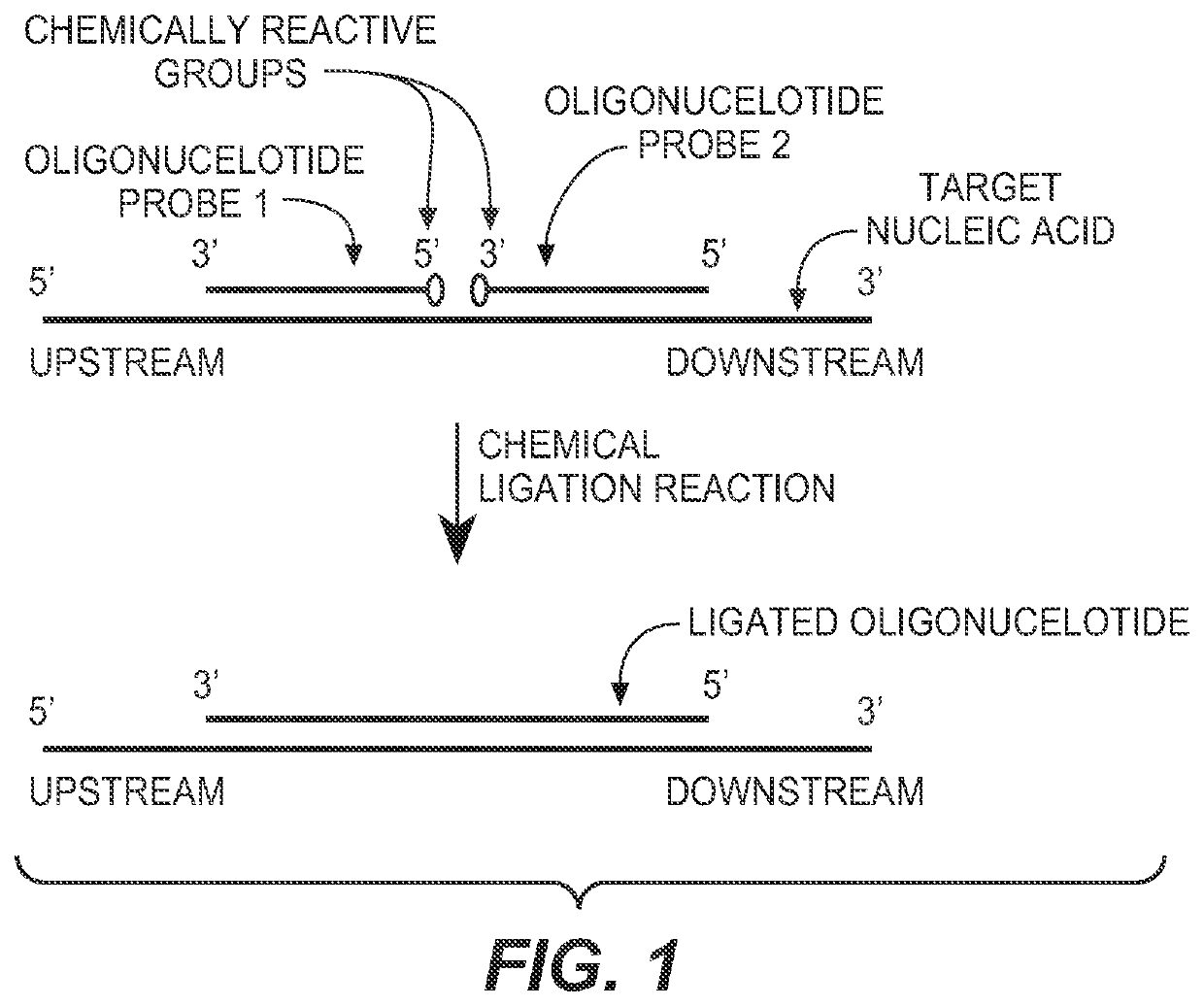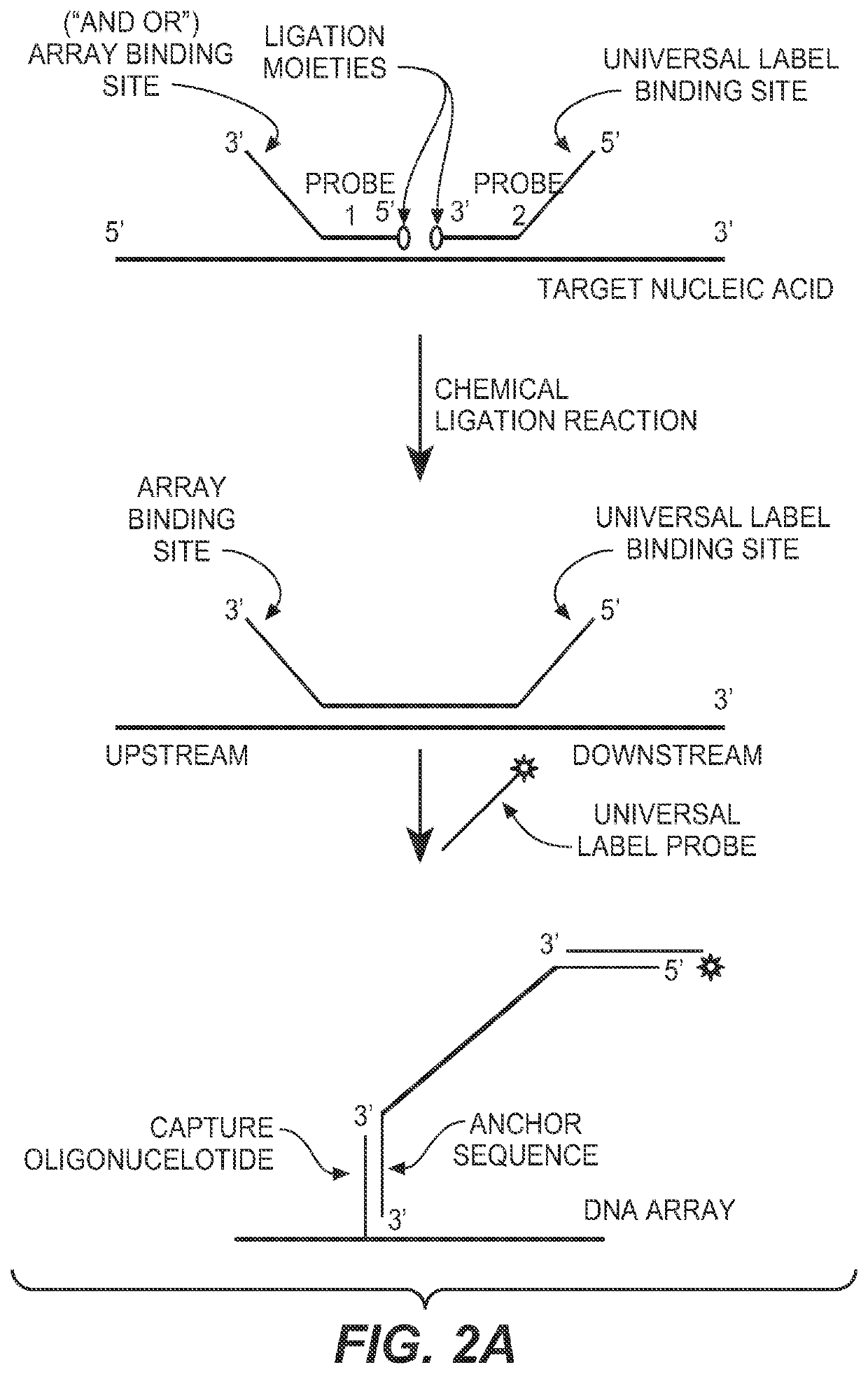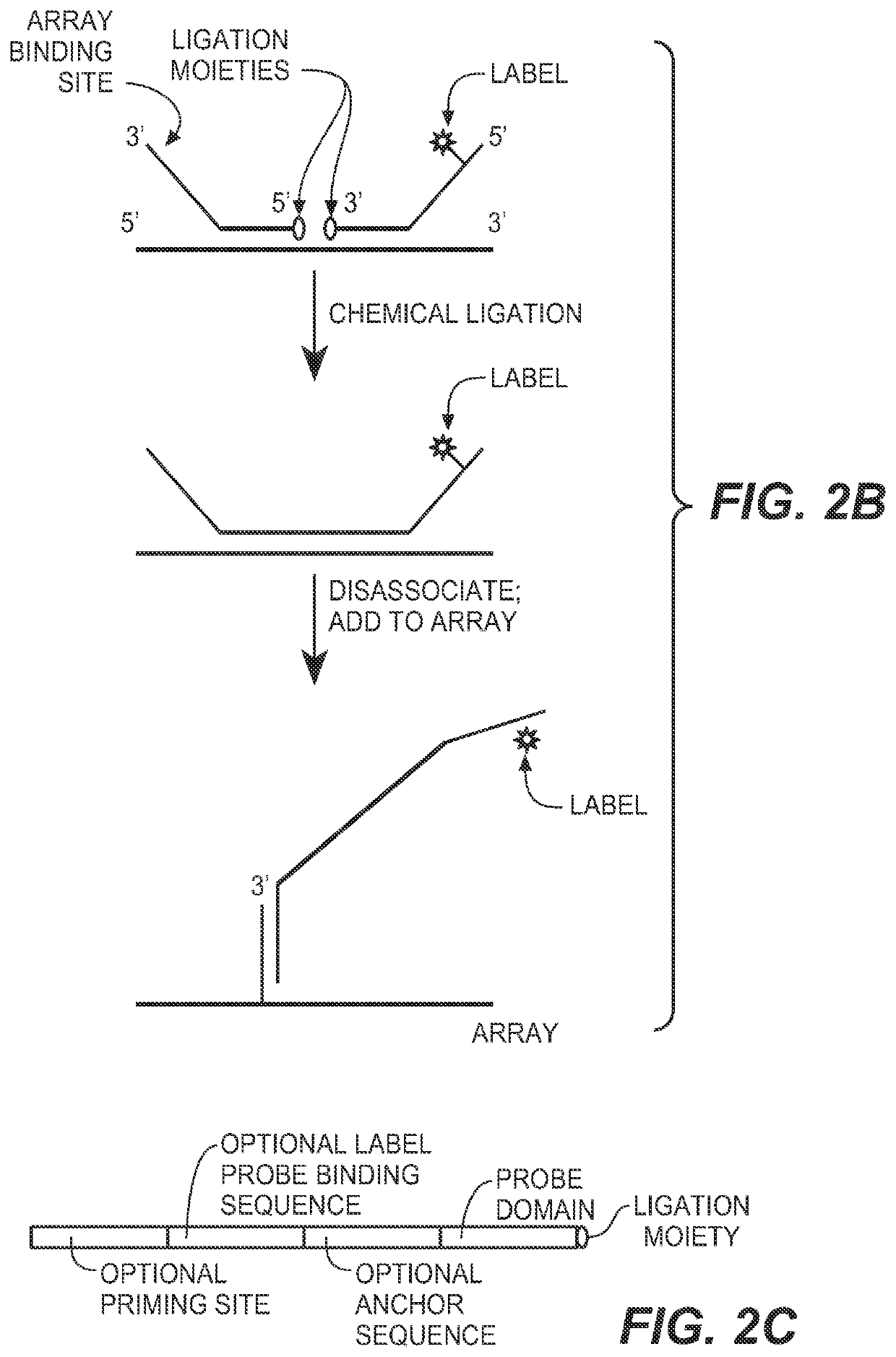Detection of nucleic acid targets using chemically reactive oligonucleotide probes
a technology of oligonucleotide probes and nucleic acids, applied in the field of detection of nucleic acids, can solve the problems of need for subsequent purification procedures, difficulty in general use, and difficulty in specificity
Active Publication Date: 2020-11-10
DXTERITY DIAGNOSTICS
View PDF80 Cites 60 Cited by
- Summary
- Abstract
- Description
- Claims
- Application Information
AI Technical Summary
Benefits of technology
This patent describes a method for efficiently detecting and measuring the presence of a specific sequence of DNA using two probes that are designed to attach to specific domains of the DNA. These probes have different functions and can attach to each other to form a specific product that can be detected and measured. This method can be performed without needing any additional enzymes and can be used with different types of DNA sequences. Overall, this method allows for quick and accurate detection of specific DNA sequences.
Problems solved by technology
The drawback to such amplification technologies is their dependence on particular reagents, such as enzymes, which result in a need for subsequent purification procedures prior to detection.
Specificity also remains a problem in many currently available assays gene probe assays.
It may be possible under some circumstances to distinguish targets with perfect complementarity from targets with mismatches, although this is generally very difficult using traditional technology, since small variations in the reaction conditions will alter the hybridization.
Many of the nucleic acid detection methods in current use have characteristics and / or limitations that hinder their broad applicability or make them unsuitable for a given application.
The need for so many upstream processing steps prior to contacting the DNA array with the sample can significantly increase the time and cost of detecting a nucleic acid target(s), and it can also have significant implications on the quality of the data obtained.
For instance, some amplification procedures are very sensitive to target degradation and perform poorly if the input nucleic acid material is not well preserved (Foss et al., Diagn Mol Pathol.
Method used
the structure of the environmentally friendly knitted fabric provided by the present invention; figure 2 Flow chart of the yarn wrapping machine for environmentally friendly knitted fabrics and storage devices; image 3 Is the parameter map of the yarn covering machine
View moreImage
Smart Image Click on the blue labels to locate them in the text.
Smart ImageViewing Examples
Examples
Experimental program
Comparison scheme
Effect test
examples
T*=Fluorescein dT (Glen Research)
the structure of the environmentally friendly knitted fabric provided by the present invention; figure 2 Flow chart of the yarn wrapping machine for environmentally friendly knitted fabrics and storage devices; image 3 Is the parameter map of the yarn covering machine
Login to View More PUM
| Property | Measurement | Unit |
|---|---|---|
| melting temperature | aaaaa | aaaaa |
| melting temperature | aaaaa | aaaaa |
| melting temperature | aaaaa | aaaaa |
Login to View More
Abstract
The present invention provides compositions, apparatuses and methods for detecting one or more nucleic acid targets present in a sample. Methods of the invention include utilizing two or more oligonucleotide probes that reversibly bind a target nucleic acid in close proximity to each other and possess complementary reactive ligation moieties. When such probes have bound to the target in the proper orientation, they are able to undergo a spontaneous chemical ligation reaction that yields a ligated oligonucleotide product. In accordance with the invention, the presence of the target(s) of interest can be determined by measuring the presence or amount of ligated oligonucleotide product.
Description
CROSS REFERENCE TO RELATED APPLICATIONS[0001]This application claims priority to provisional application Ser. No. 60 / 746,897, filed on May 10, 2006, which is herein incorporated by reference in its entirety.FIELD OF THE INVENTION[0002]This invention relates to compositions and methods for detecting nucleic acids in a sample using chemical ligation.BACKGROUND OF THE INVENTION[0003]This invention relates to compositions, apparatus and methods for detecting one or more nucleic acid targets present in a sample. The detection of specific nucleic acids is an important tool for diagnostic medicine and molecular biology research.[0004]Gene probe assays currently play roles in identifying infectious organisms such as bacteria and viruses, in probing the expression of normal and mutant genes and identifying mutant genes such as oncogenes, in typing tissue for compatibility preceding tissue transplantation, in matching tissue or blood samples for forensic medicine, and for exploring homology a...
Claims
the structure of the environmentally friendly knitted fabric provided by the present invention; figure 2 Flow chart of the yarn wrapping machine for environmentally friendly knitted fabrics and storage devices; image 3 Is the parameter map of the yarn covering machine
Login to View More Application Information
Patent Timeline
 Login to View More
Login to View More Patent Type & Authority Patents(United States)
IPC IPC(8): C12Q1/68C12Q1/6827C12Q1/6858C12Q1/6818C07H21/04
CPCC12Q1/6858C12Q1/6827C12Q1/6818C12Q2523/109C12Q2533/107C12Q2565/514Y10T436/143333
Inventor TERBRUEGGEN, ROBERT
Owner DXTERITY DIAGNOSTICS
Features
- R&D
- Intellectual Property
- Life Sciences
- Materials
- Tech Scout
Why Patsnap Eureka
- Unparalleled Data Quality
- Higher Quality Content
- 60% Fewer Hallucinations
Social media
Patsnap Eureka Blog
Learn More Browse by: Latest US Patents, China's latest patents, Technical Efficacy Thesaurus, Application Domain, Technology Topic, Popular Technical Reports.
© 2025 PatSnap. All rights reserved.Legal|Privacy policy|Modern Slavery Act Transparency Statement|Sitemap|About US| Contact US: help@patsnap.com



